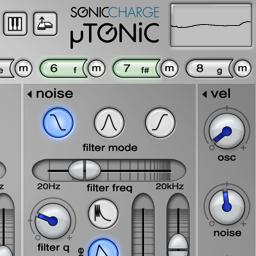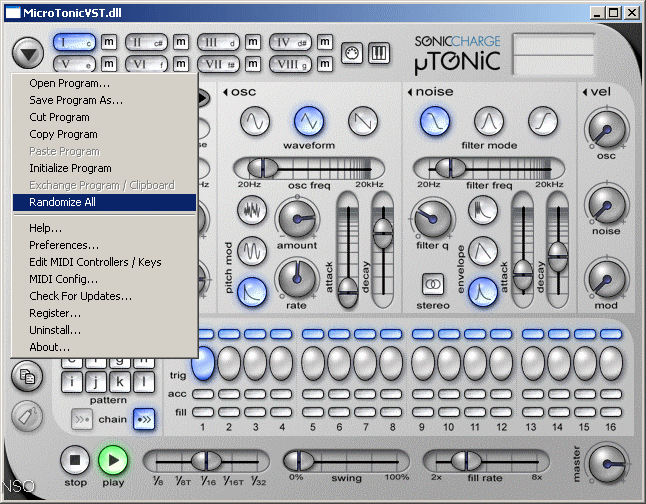
I am afraid I am pretty predictable when it comes to music. When you make music, which are the instruments and fx (hardware or software) you really can’t live without, besides your own? The upside to this frantic testing is that I get rid of most bugs early in the development process, leaving very few for the beta stages, and (so far) virtually none in the released software. I spend at least half the development time just testing what I code.

One of the major headaches is maintaining 100% compatibility with all the various operating system versions and host applications. Knowing when to give up and saying “it will pass” is especially difficult when you work alone. Sometimes though, my own perfectionism becomes my greatest enemy. There is the phrase “it is not what you do, it is the way you do it”, and I couldn’t agree more. Ideas grow on trees it is the visions and the craftsmanship that matters. Which is the most difficult challenge in your job? Coming out with new ideas, hackers, bugs, or what? The only innovation I allowed myself to add to the pattern programming was the fill buttons. The lack of flexibility and the stiffness of these old machines were due to technical limitations, but turned out to change the way that music sounds (especially if you look at European dance music). When I designed MicroTonic in particular I wanted to stay true to the original concepts of pattern based drum-machines of the late 70’s and early 80’s. Not too much no, but perhaps more than people would expect. Talking pattern based drum-machines in general, I’m quite surprised that the basic concepts behind them have not changed much through the years for example I’d like them to be more “flexible” and suitable to less rigid, linear kinds of music (also dealing easily with non 4/4 time signatures, etc.). I guess it takes a German to design something so characteristically Swedish, eh eh! In particular, I would never have thought of the idea of delivering the USB-memory inside a metal can.

I give the entire credit of the idea to Wolfgang Merkle of Bitplant. How did the TinTonic idea come out? It’so brilliantly, well… “nordic design”! … Maybe you could also try to sell it worldwide through Ikea, eh eh! (But of course, I have also released a few updates.) I still use MicroTonic a lot personally and for some reason I haven’t grown tired of it yet, so I expect to continue working on it for long. MicroTonic is on its fourth year now and it is selling better than ever. When I released it back in 2003 I thought that the life-time of a plug-in couldn’t be much more than two years perhaps. I am honestly surprised how well it has stood the test of time. What’s your opinion on it, after some years, and what about its future? We’ve reviewed Microtonic here, and as many we think it’s a little jewel. Several months into the development on MicroTonic, I did a 360 and decided to focus on making a single very strong product instead.
SONIC CHARGE MICROTONIC FREE
My original intention was to release a lot of very small plug-ins only and decided that a synthetic drum-machine would be an excellent free teaser to bring attention to my site.
SONIC CHARGE MICROTONIC SOFTWARE
The whole point of creating Sonic Charge was to see if it was possible to create and sell software entirely on my own, using only internet distribution. Why did you decide to create your own brand, SonicCharge, to release Microtonic? No one else was interested in releasing it at the time? I would perhaps be annoyed if Malström turned out the only thing that people would remember me by, but at the same time being remembered at all is really sufficient. I rather butcher products that I do not feel 100% confident about as opposed to releasing them just to cash in on my reputation. (At least if the things being said are positive.) Naturally you always want to top your previous achievements, so in honesty, I am always nervous about my new releases. If there are things being kept said about me at all I am naturally proud. Magnus is taking a little vacation in the deep forests of Småland (Sweden, of course!), where he’s meditating on his next software…ĭo you feel more proud or more annoyed when the first thing that keeps being said about you is something like: “…oh, yes, he’s the guy who worked on that Reason 2’s synth…” ?


This time our special guest is Magnus Lidström, the mind behind Propellerhead Reason 2’s Malström synth and our beloved µTonic (or MicroTonic), released under its own Sonic Charge brand.


 0 kommentar(er)
0 kommentar(er)
